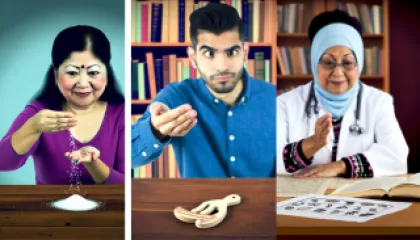The Surprising Benefits of Mindful Eating: A Personal Perspective
1 year ago
Mindful Eating
How Can You Express Your Feelings More Effectively?
1 year ago
Expressing Feelings Effectively
Rethinking Marriage: A Modern Perspective on Marital Challenges
1 year ago
Marital Issues
A Beginner's Guide to Starting Drama Therapy
1 year ago
Drama Therapy
Overcoming Disordered Eating: A Step-by-Step Guide
1 year ago
Disordered Eating
Mastering the Mind: The Ultimate Guide to Understanding Superstitions in Psychology
1 year ago
Psychology Behind Superstitions
How Can Schools Effectively Prevent Bullying?
1 year ago
Bullying Prevention
Breaking Free from Perfectionism: Insights from a Clinical Psychologist
1 year ago
Overcoming Perfectionism
Step-by-Step Guide to Managing Toxic Relationships
1 year ago
Managing Toxic Relationships
Understanding Recovery: A Review of Emotional Abuse Healing Research
1 year ago
Healing from Emotional Abuse
What Are the Core Principles of Emotional Intelligence?
1 year ago
Emotional Intelligence Basics
Mindfulness vs. Meditation: A Step-by-Step Guide to Understanding the Differences
1 year ago
Mindfulness vs Meditation
Mastering the Mindset: My Journey to Embracing Success Psychology
1 year ago
Success Psychology
Top 10 Strategies to Discover Your Life Purpose
1 year ago
Finding Life Purpose
Decoding Your Dreams: A Step-by-Step Guide to Understanding Their Meanings
1 year ago
Dream Interpretation















